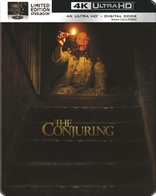
The battery-powered lights should be a safer option for you to play around with, but it may still be a bit uncomfortable running at 5 v (2 C batteries in series would indicate a nominal 3 v operation).
With all due respect, you really need to become accustomed to doing the math involved, in order to play around with the electrical stuff you are playing with. It can be a rewarding and intriguing project, but also a very dangerous one (potential fire hazards, damaged equipment, personal injury), if you are not careful and cognizant of the circuits you are creating. You can ask for quick answers online, but you are still on the line to evaluate if advice you "got off the internet" will be safe and practical for your uses. Hence, that is why I suggest you learn more about the math before hooking stuff up.
The formulas are as follows:
V=I * R
P=I * V
V is voltage
I is current
R is resistance
P is power
That is the minimum you will need to grasp before you should experiment with simple electronics. Beyond that, it is also highly recommended to do some reading up to gain a sense of what sort of values are "high", what is "safe", and building things with a safety margin. This will give you the grasp over involved mechanics of the project so that you can identify dangerous scenarios, impractical approaches, and build things that are going to stay alive.
Short of all that (no pun intended), you are literally "playing with fire". So BE CAREFUL with what you are doing, and never leave this stuff unattended, if you haven't evaluated all of the math and safety concerns of the design.
EDIT: ...and don't go nuts hooking up more lights to a USB socket. Even a powered USB socket has a current limit, after which it will shut down or burn-out if you exceed the limit. If you are hooking up devices intended for 3V to a 5V power supply, that is already creating a situation where this can happen (the 3 V device can potentially create excessive current flow because its internal resistance was not designed to be fed at 5 V, hence, more current will flow than was intended). 1+ amps of current on a USB line can be pretty "iffy".
EDIT2: Maybe the obvious safe approach is to simply buy 2 sets of these lights and connect them IN SERIES to the USB. That will double the resistance w/o having to mess with any power resistors to pad the circuit. The lights may be a bit more dim, but they will stay alive, and the USB power supply will surely be operating in a safe domain. Just be sure to connect them IN SERIES, not in parallel (parallel will create situation even more dangerous than what you have now).
Last edited by Mr. Hanky; 10-28-2007 at 09:24 PM.
Reason: trying to save lives here!
|






















 Linear Mode
Linear Mode

